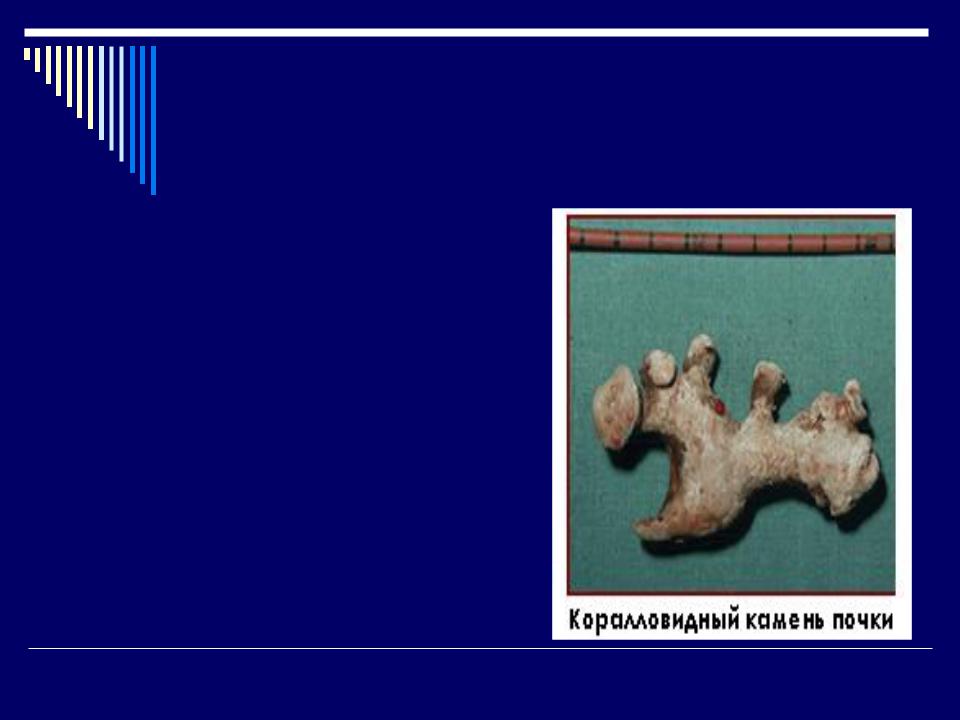
Урология - Urolithiasis
.pdf
Lesson 4 Urolithiasis

Urolithiasis
The process of forming stones in the kidney, bladder, and/or urethra (urinary tract).
It’s a metabolic disorder, caused by different exogenous and endogenous reasons.
Can be inherited

History
The most ancient stone was founded in mummy buried 7000 years ago.
Morbidity rate is from 0.5 up to 5.3% all over the world.

Classification of stones by composition
Urates – crystals of uric acid
Oxalates – calcium oxalate, ammonium oxalate
Fosphates – calcium phosphate
Carbonates – salts of carboxylic acid.
Cystine stones - occur at impairment of protein metabolism
Xantine stone – formed by xantine and uric acid
Cholesteric

Classification by form
Round shaped
Oviform
Angular
Hilly
With spikes
Coral-like
Gigantic
by http://urolap.spb.ru/urgravel.php

Classification by size
Small – up to 4 mm
Medium – 4-6 mm
Large more than 6 mm

Aethiology
Exogenous factors:
Climat, biogeochemical structure of soil, chemical properties of water, fluid intake regimen
Labour conditions
Lack of vitamines A and vitamines of B group
Nanobacteria (atyphcal gram-negative bacteria, producing calcium carbonate, are revealed at 97% of all calculi)

Endogenous factors
Local inborn and acquired changes of urinary tract.
One functioning kidney
Vesicoureteral reflux
Infections of urinary tract
Long-time immobilization
Hyperparathyroidism, podagra
Diseases of gastrointestinal tract, liver
Resection of bowel, ileocolic anastamosi
Crone disease
Sarcoidosis, leukemia, metastatic invasion of bones
Increased vit C and A intake
Elevation of GGT and alkaline phosphatase

Physiologic basis of formation kidney and bladder stones is different.
Kidney stones form as a result of physicochemical or genetic derangements leading to supersaturation of the urine with stone-formingsalts or, less commonly, from recurrent urinary tractinfection with ureaseproducing bacteria. Stasis in theupper urinary tract due to local anatomic anomaliesmay also promote or enance stone formation insusceptible individuals.
In contrast, bladder stones form almost exclusively as a result of urinary stasis and/or recurrent infection due to bladder outlet obstruction or neurogenic bladder.

Symtoms and clinic
Renal colica
Pain at lumbal area
Haematuria
Stones passage
